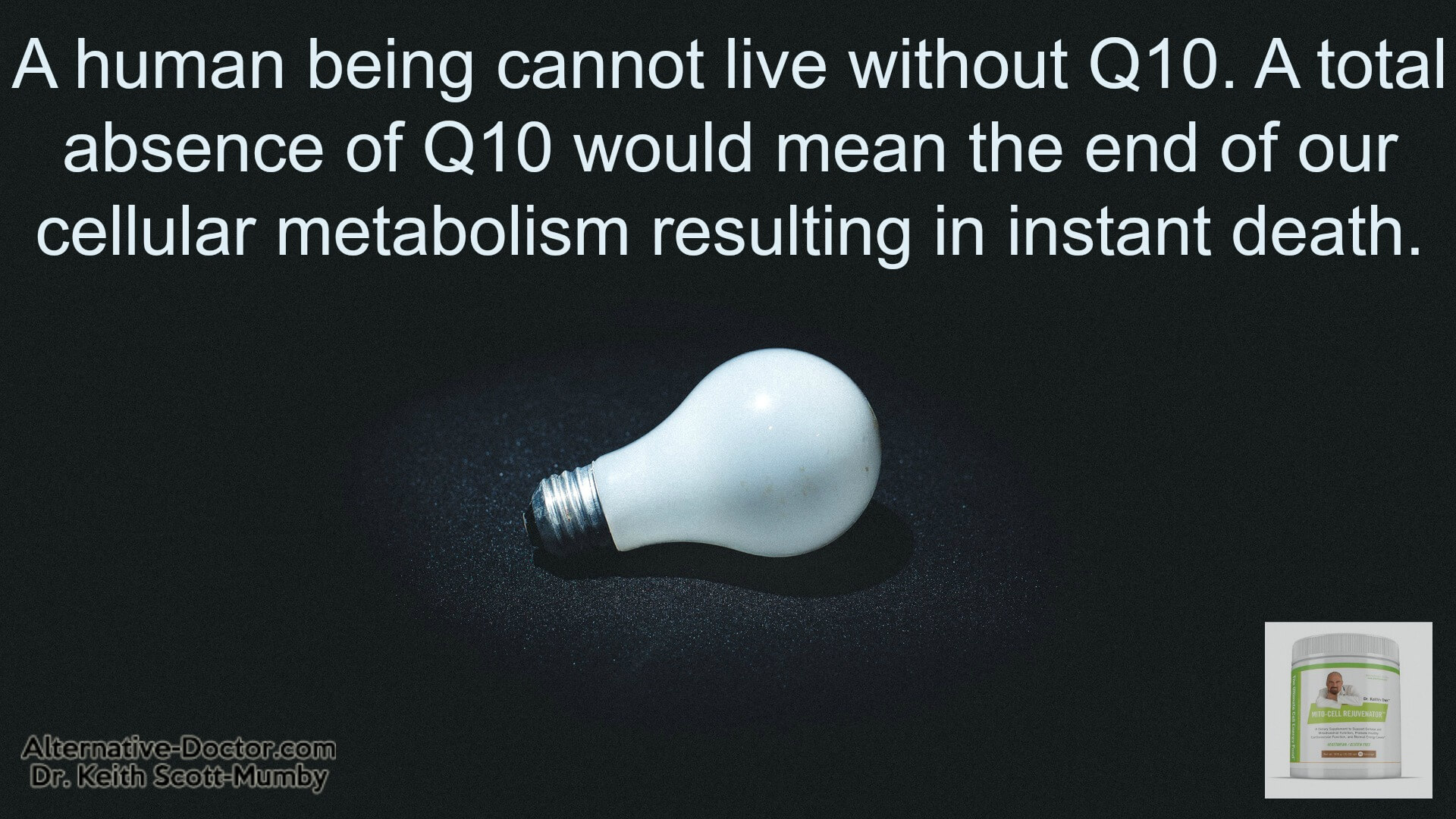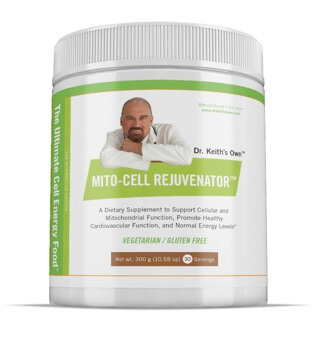Many of you now know that my ultra-mitochondria healing formula called Mito-Cell Rejuvenator contains generous amounts of Coenzyme Q10. It’s in the form of ubiquinone.
From time to time, people who are not very knowledgeable, and get all their “information” from the Internet via Google, address me as a fool and ask if I know about ubiquinol.
This has started to irritate me somewhat, so let me straighten you all out on the TRUTH about forms of CoQ10 and ubiquinol vs ubiquinone.
I’ll reverse the normal procedure and start with the summary!
- All meaningful science on the benefits of CoQ10 were done with ubiquinone, not ubiquinol.
- Ubiquinol has not been studied for benefits, only for absorption.
- Yes, ubiquinol is supposed to be better absorbed, BUT IT CHANGES INTO UBIQUINONE AS SOON AS IT ENTERS THE BODY.
In fact ubiquinol is expensive, very unstable and starts to change to the more durable Ubiquinone even in the capsules! A large amount of ubiquinol, that you paid so much extra for, has already deteriorated into the cheaper (but proven effective) form of ubiquinone by the time you put it in your mouth.
That’s why Dr. Stephen Sinatra and me both choose ubiquinone. We know what we are doing!
If you are not familiar with my Mito-Cell Rejuvenator yet, you need it. It’s powerhouse energy. One of my lovely subscribers in her 90s reported jumping around with far too much energy and had to cut back the dose!
Click here to discover how Mito-Cell Rejuvenator can help you!
Quick Story
Frederick Crane (pictured) and colleagues at the University of Wisconsin-Madison Enzyme Institute were the first to isolate coenzyme Q10 from beef hearts in 1957.

Since its discovery, scientists have been conducting research with this intriguing nutrient. It has been found to have a crucial role in heart and brain health, in fact all our mitochondria, which are found in every single cell.
The very name “ubiquinone” reflects the fact that it exists everywhere in our bodies (“Ubi-” (Latin) means everywhere, as in the English word ubiquitous)
A human being cannot live without Q10. A total absence of Q10 would mean the end of our cellular metabolism resulting in instant death. That’s why statins, which deplete CoQ10 levels are a very bad idea.
In 2006, a new type of CoQ10 called “ubiquinol” surfaced commercially. Clever marketing campaigns attempted to present this new form as an improved CoQ10 source that would be absorbed more easily in the body and would be superior to ubiquinone. Tricky science comparing poorly absorbed forms of ubiquinone with specially-absorbable forms of ubiquinol made it look good.
I’m not easily fooled. Beware the science of people who are trying to sell you something!

Deliberate Confusion
Of course, claims that ubiquinol was somehow better justifies charging more for it.
Consumers as well as scientists and many health practitioners bought into this nonsense and became confused by the claims for ubiquinol. Some even started questioning the traditional form of CoQ10, ubiquinone, even though it had been sold commercially and had been proven effective in numerous clinical trials over the years.
This confusion is addressed in a newsletter (“Coenzyme Q10 Facts or Fabrications”) that was issued by a group of leading experts. In their newsletter, they call these campaigns “false” and “misleading” and say that the advertising campaigns have only generated more confusion about CoQ10.
(Download the PDF here.)
Ubiquinol vs Ubiquinone. What’s the Difference? (Not a Lot!)
Is there really a difference between ubiquinol vs ubiquinone? Is ubiquinol ”better” than ubiquinone? There is very little information available to answer this question, because ubiquinol has not been studied for its effectiveness. All the research (and it’s considerable) has shown the benefits of CoQ10, using ubiquinone.
Otherwise, the only known differences between these two types of CoQ10 besides their color (ubiquinol is milky white, and ubiquinone is yellowish) are that ubiquinol is a more expensive raw material and is less stable, biochemically speaking. Meaning, it breaks down quickly.
[The best way to test if the content in a ubiquinol capsule is really what it claims to be is to pierce the capsule and squeeze out the content. If it is yellowish, there is a risk that it has oxidized and has turned into ubiquinone. In that case, you have not received what you paid for].
Ironically, CoQ10 shifts back and forth between its ubiquinone and ubiquinol forms in a continuous cycle inside the body. This is all part of CoQ10’s role in biology. So, when you take ubiquinol, it changes to ubiquinone if necessary, and vice versa. It makes no difference in which form you take the substance originally.
- Ubiquinone (the oxidized form) is essential for CoQ10’s role in cellular energy metabolism (ATP synthesis)
- Ubiquinol (reduced form) is essential for the antioxidant function of CoQ10
I chose Ubiquinone for my formula, because I want its energy-giving properties. OK?
Ubiquinone Saves Lives
Be in no doubt: ubiquinone is a life-saver, whatever the smart alec marketers are trying to tell you. I’m aggrieved at people complaining I have not used the “proper” form of CoQ10 in my formula.
The most recent groundbreaking study of CoQ10, published in the Journal Of The American College Of Cardiology (2014)1, showed a 43% lower risk for heart-related mortality among heart failure patients who took supplements of CoQ10. In this study (the Q-Symbio clinical trial), ubiquinone was used.
A Swedish study (the KiSel-10 clinical trial), which was published at the Public Library of Science (2015), showed a 54% lower mortality rate among elderly people who took supplements of CoQ10 (and selenium) was also conducted with ubiquinone.2
As if that’s not enough, yet another trial found the lower death rate benefits of supplementing selenium and CoQ10, as independent variables.3
Note the use of selenium (200 mcg), which I recommend therefore taking with my Mito-Cell Rejuvenator.

Get yourself some now. Let it work its energy restoration and anti-aging magic!
Manufacturing Note:
CoQ10 is not all that bio-available as it is crystalline in its raw material form. The body cannot absorb crystals, so the CoQ10 needs to be broken down into molecules that are able to pass through the intestinal wall.
Only few CoQ10 manufacturers have managed to develop a formula that ensures optimal absorption of the active ingredient. The CoQ10 that has the best documentation for its bio-availability features CoQ10 as ubiquinone. This specific preparation was specifically selected for the Q-Symbio and KiSel-10 studies because of its documented and reliable bio-availability, quality, and safety.
That’s what I use in my Mito-Cell Rejuvenator.
It’s the business! You need it. WE ALL NEED IT!
Click here to get yours now >>
The post Ubiquinol vs Ubiquinone. The Truth About CoQ10 appeared first on Dr. Keith Scott-Mumby.
